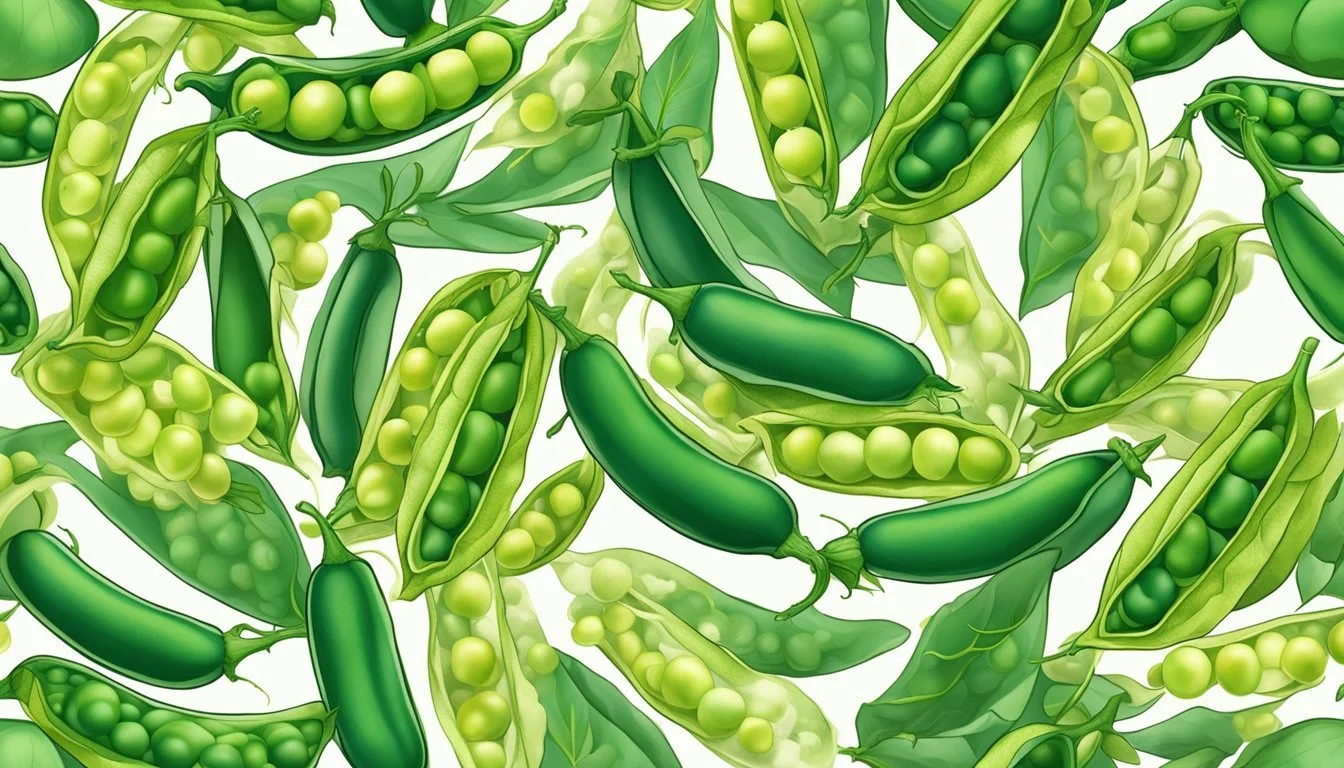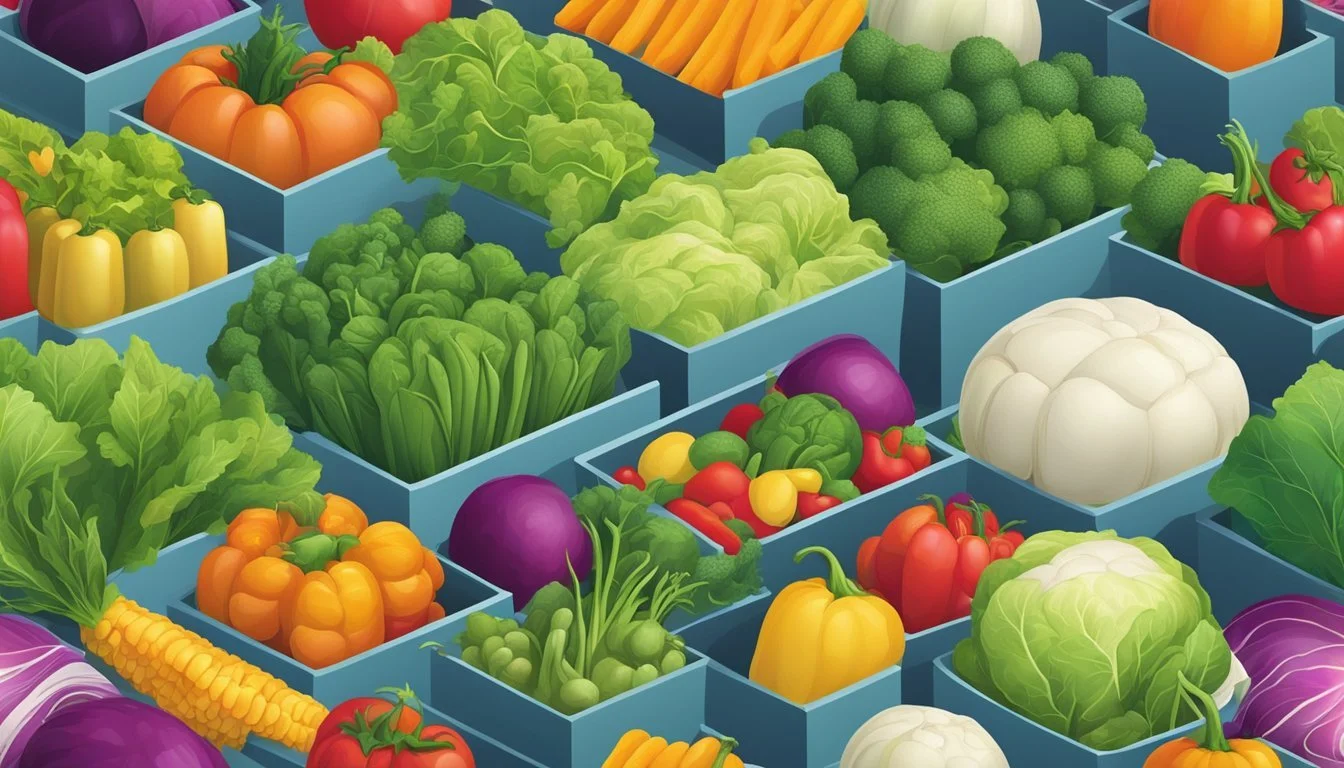10 Vegetables That Have Drastically Changed Over Time
Throughout centuries of cultivation, many vegetables have undergone significant transformations in appearance, taste, and nutritional value. From early agricultural practices to modern breeding techniques, the evolution of these everyday produce items highlights humanity's impact on food.
Understanding how vegetables have changed over time offers insight into agricultural advancements and dietary shifts. This journey from wild variants to the crops we recognize today showcases both the resilience and adaptability of plant species under human influence.
1) Purple Carrots
Purple carrots have a rich history dating back to their origins in Afghanistan. They were domesticated thousands of years ago and soon spread to the eastern Mediterranean by the 1300s.
Carrots were originally purple, not orange. A significant change in their appearance occurred with the introduction of carotene-rich varieties. This pigment, found in high concentrations, gives modern carrots their bright orange color.
In ancient times, purple carrots were noted in texts and used in medicinal concoctions. Their popularity was widespread until the rise of the orange carrot in the 17th century, particularly in the Netherlands.
Purple carrots contribute to biodiversity. Unlike orange carrots, purple varieties offer a range of nutrients and antioxidants. They contain anthocyanins, which have multiple health benefits.
Despite their decline in popularity, purple carrots have made a comeback in recent years. They are valued for their unique flavor and potential health benefits, making them a vibrant addition to modern diets.
2) Broccoflower
Broccoflower is a unique hybrid vegetable that combines the characteristics of broccoli and cauliflower. It features a distinct light green head, resembling a cauliflower in structure while taking on the color of broccoli.
First grown in Holland, broccoflower was introduced to the U.S. by Rick Antle of Tanimura and Antle, a family farm in California. The farm coined the name "broccoflower," which has since become widely recognized.
Broccoflower offers both nutritional benefits and visual appeal. It is rich in dietary fiber, which aids digestion and promotes a healthy gut. Moreover, it is a good source of vitamins C and K, providing essential nutrients for overall well-being.
In addition to its health benefits, broccoflower is versatile in the kitchen. It can be cooked or steamed, making it an ideal addition to various dishes. Its mild, slightly sweet flavor pairs well with a range of ingredients.
With its unique appearance and beneficial properties, broccoflower stands out as a notable example of vegetable hybrids that have gained popularity in recent years.
3) Kalettes
Kalettes are a hybrid vegetable developed by crossing kale and Brussels sprouts. This unique vegetable combines the best traits of both, resulting in a small, leafy green with a mild, nutty flavor.
Developed over 15 years by the British company Tozer Seeds, Kalettes were introduced in the United States in the fall of 2014. They have a distinct appearance, featuring curly, purple-tinged leaves with purple stems.
Kalettes require about eleven months to grow and are typically harvested after exposure to cold temperatures. This process increases their natural sugars, making them particularly sweet and tender during the winter months.
Nutritionally, kalettes are notable for their high protein content. For instance, 100 grams of kalettes contain 4.71 grams of protein, which is higher than many other vegetables.
They can be prepared in various ways. Popular methods include steaming, roasting, microwaving with butter, or adding to stews shortly before serving. These versatile cooking options make kalettes a valuable addition to many dishes.
4) Candy Cane Beets
Candy Cane Beets, also known as Chioggia Beets, are recognized for their distinct red and white concentric rings. This variety is not only visually appealing but also versatile in the kitchen.
Their sweet and earthy flavor makes them a favorite among chefs and home cooks. They can be roasted, pickled, or sautéed, adding a burst of color and taste to any meal.
These beets pair well with ingredients like goat cheese and walnuts, enhancing both the flavor and nutritional profile of salads and side dishes. For those looking to experiment, try combining them with chickpeas for a unique dish.
Candy Cane Beets have also seen a rise in popularity due to their potential health benefits. Rich in vitamins and antioxidants, they contribute to a balanced diet and overall wellness.
5) Romanesco
Romanesco, a unique variety of cauliflower, stands out with its vibrant green color and distinctive fractal pattern. This geometric marvel is not only visually striking but also a fascinating subject for scientists and mathematicians.
The formation of Romanesco's intricate spirals has been a subject of curiosity for a long time. A team of scientists from CNRS and Inria recently uncovered the mystery. They found that the shape results from its stems producing buds at an increasingly rapid rate, unlike other cauliflowers, where the rate remains constant.
Mathematical models played a crucial role in understanding its pattern. These models, combined with plant biology, helped reveal how slight genetic modifications could lead to Romanesco's characteristic spirals.
Romanesco's development is also tied to human agricultural practices. Selective breeding has fine-tuned its appearance, ensuring the persistence of its unique fractal form.
Despite its unusual appearance, Romanesco is cultivated similarly to other cauliflower varieties. Its growth cycle and general care requirements align closely with those of traditional cauliflower.
Romanesco is not just a visual treat. Its taste resembles that of traditional cauliflower, with a slightly nuttier and earthier flavor. This makes it a versatile addition to various culinary dishes, from salads to roasting.
6) Rainbow Chard
Rainbow Chard, a vibrant member of the chard family, stands out for its multicolored stems. Originating from the Mediterranean region, its impressive hues range from deep reds to bright yellows.
This hardy vegetable boasts a high nutritional profile. Rich in vitamins A, C, and K, it offers a nutritious boost. The leaves and colorful stems also provide significant amounts of magnesium, potassium, and fiber.
In the kitchen, Rainbow Chard's versatility shines. Many chefs sauté it with garlic, olive oil, and a pinch of chili flakes for a quick and flavorful side dish. Alternatively, it can be added to soups, stews, or even baked dishes for an added depth of flavor.
The growth and cultivation of Rainbow Chard have improved over the years. Modern techniques now encourage higher yields and better resistance to pests. Sowing the seeds directly in garden beds and incorporating organic matter helps in achieving a robust harvest.
Beyond its culinary uses, Rainbow Chard is a striking addition to any garden. Its colorful stems create visual interest, making it both an edible and decorative plant.
7) Graffiti Cauliflower
Graffiti cauliflower, recognized for its vibrant purple hue, is a standout among vegetable varieties. This heirloom variety has evolved to not only catch the eye but also to deliver a unique taste profile and nutritional benefits.
The plant thrives in cool-season conditions, ideally between 60°F and 70°F. It requires at least 6 hours of sunlight daily and well-drained soil with a pH of 6.0 to 6.5.
Authentic care involves regular watering, about an inch per week, coupled with mulching to conserve moisture and control weeds. Seedlings are ready to be transplanted after developing two to four true leaves, typically 4-6 weeks post-sowing.
Preparing the soil is crucial. Removing weeds and adding compost or well-rotted manure mixed into the topsoil enhances growth. This preparation allows Graffiti cauliflower to establish itself and flourish.
These practices ensure a bountiful harvest of this striking vegetable, which remains a favorite for its aesthetic and nutritional properties.
8) Silk Pea Pods
Silk pea pods are a unique variety of edible pod peas. They are known for their thin, tender shells and sweet flavor. These pods can be eaten whole, making them a convenient and nutritious option for quick snacks or meals.
Rich in vitamins and minerals, silk pea pods offer numerous health benefits. They are packed with antioxidants that help to boost the immune system. With low calorie and carb content, they are ideal for those looking to manage their weight.
In the garden, silk pea pods are appreciated for their ease of growth. They thrive in cool weather and require minimal maintenance. The harvest can be enjoyed straight from the plant or used in various culinary dishes.
Silk pea pods enhance the texture and flavor of salads, stir-fries, and soups. They can be added to dishes right before serving to retain their crispness. Cooking methods such as sautéing and steaming help preserve their nutritional value while bringing out their natural sweetness.
For optimal freshness, it’s best to store silk pea pods in the refrigerator. They should be used within a few days of harvesting for the best taste and nutritional benefits. Overall, silk pea pods are a versatile and healthy addition to any diet.
9) Fairy Tale Eggplant
Fairy Tale Eggplant, known for its strikingly beautiful appearance and delicate flavor, has become a favorite among chefs and home gardeners alike.
This miniature variety boasts purple and white striped skin. Its small size allows it to cook quickly and absorb flavors well, making it versatile in many dishes.
Cultivating Fairy Tale Eggplant involves sowing seeds in warm soil and maintaining a temperature of at least 75°F (24°C). Space the seedlings 2-3 inches apart once true leaves appear.
In the kitchen, these baby eggplants can be roasted, grilled, or sautéed. For roasting, halve the eggplants, drizzle with olive oil, and season with salt and pepper. Roast at 425°F for about 30 minutes for a tender, flavorful dish.
The plant's compact size makes it an excellent choice for indoor gardening. Regular pruning with clean, sharp tools helps maintain the plant's health and productivity. Always clean tools between cuts to prevent disease spread.
Fairy Tale Eggplant's unique appearance and culinary flexibility have secured its place as a beloved vegetable in modern gardens and kitchens.
10) Watermelon Radish
Watermelon radishes are an heirloom variety of daikon radishes. They originated in China, known there as shinrimei. This radish stands out with its vibrant magenta interior and white skin combined with a thin, green outer rim, resembling a watermelon.
Compared to regular radishes, watermelon radishes can be notably larger, sometimes reaching golfball size or bigger. They are a cold-weather vegetable, thriving best when seeds are planted in soil that's at least 40 degrees Fahrenheit.
This radish is popular for its mild taste and nutritional benefits. To reduce its slightly spicy kick, it can be soaked in ice water for 20 minutes. The center of the radish is milder than the outer rim.
Watermelon radishes are used in a variety of cuisines, from salads to garnishes. They maintain their crunchiness even when roasted, making them versatile in cooking. They bring a bright, appealing color to dishes, enhancing both appearance and flavor.
Their increased popularity in recent years showcases how traditional vegetables can find new life in modern kitchens.
Historical Context of Vegetable Evolution
Vegetables have undergone significant transformations due to ancient farming methods and the early exchange of goods.
Ancient Agricultural Practices
Early farmers played a crucial role in shaping the vegetables we consume today. The domestication of wild plants allowed for the development of stable food sources. Selective breeding was an important technique, where desirable traits such as size, taste, and resilience were chosen.
Examples:
Corn: Originally small and tough, early Mesoamerican farmers gradually bred it to be larger and sweeter.
Tomatoes: Initially small and bitter, were cultivated in the Andes to become the juicy fruits found today.
Early agrarians also made use of techniques like crop rotation and irrigation, which ensured sustainability and high yields.
Impact of Early Trade Routes
Trade routes facilitated the global dissemination of various vegetables.
Key Routes:
Silk Road: Enabled the exchange of vegetables like cucumbers and eggplants between Asia and the Mediterranean.
Maritime Trade: Introduced crops such as sweet potatoes and maize to new continents
Modern Agricultural Innovations
Modern agriculture has seen significant advancements with the integration of genetic modification and organic farming techniques, transforming how vegetables are cultivated.
Genetic Modification
Genetic modification involves altering the DNA of plants to enhance desirable traits such as pest resistance, yield, and climate resilience. By using technologies like CRISPR and Agrobacterium-mediated transformation, scientists can precisely target specific genes.
These innovations have led to the development of genetically modified varieties of staple crops like corn and soybeans. Such modifications help in reducing pesticide use and improving crop efficiency. For instance, Bt corn has been engineered to resist insect pests, minimizing the need for chemical treatments.
The ability to modify crops at the genetic level allows for faster adaptation to changing environmental conditions and market demands.
Organic Farming Techniques
Organic farming techniques emphasize sustainable agricultural practices avoiding synthetic chemicals and genetically modified organisms. Crop rotation, composting, and cover cropping are among the main strategies employed.
These methods enhance soil health and promote biodiversity. Farmers utilize natural pest control methods and organic fertilizers, reducing the environmental footprint of food production. For example, intercropping, where multiple crops are grown together, helps deter pests and improves soil fertility.
Organic certification standards ensure that products labeled as organic meet specific criteria, providing consumers with healthier and more eco-friendly food options. This approach supports sustainable farming while catering to a growing market demand for organic produce.







